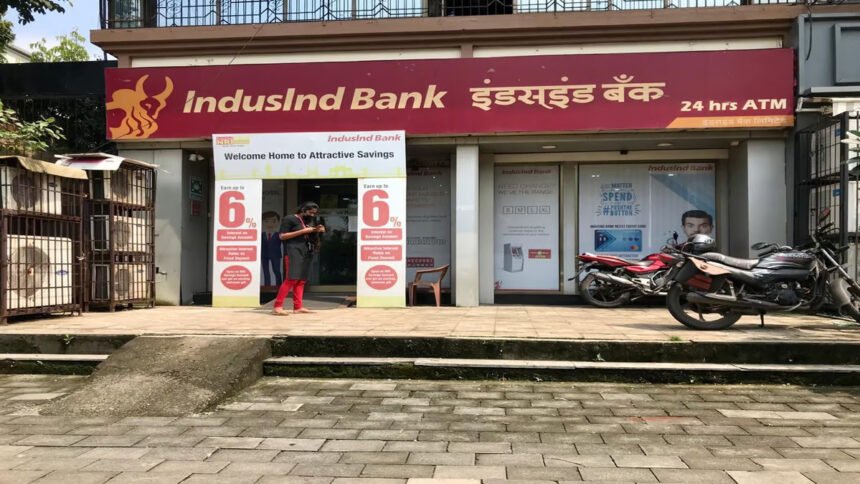Despite marginal growth in net interest income (NII) by 5% year-over-year (YoY) to ₹5,347 crore, IndusInd Bank’s net interest margin (NIM) has declined to 4.08%, a drop of 21 basis points from the previous year’s 4.29%. As investors assess the financial landscape, analysts have shared mixed recommendations, with some downgrading their outlook on the stock. This article explores the key takeaways from the latest earnings report and analyzes what experts are suggesting: Should you buy, sell, or hold IndusInd Bank shares?
A Closer Look at the Q2 Performance
The numbers paint a worrying picture for investors. IndusInd Bank’s net profit decline of 39% YoY has raised eyebrows across the financial markets. Even though the bank managed to increase its NII, the drop in NIM points to weaker profitability in its lending business. Furthermore, the deterioration in asset quality adds to the challenges, with gross non-performing assets (NPA) rising to 2.11% and net NPA increasing to 0.64% indusind bank share price.
NIM Decline and Asset Quality: Red Flags?
The fall in net interest margin indicates that IndusInd Bank is struggling to maintain profitability on its loans. The QoQ and YoY decline in NIM has prompted analysts to revise their expectations downward. Higher NPAs further emphasize the bank’s difficulty in managing credit quality, with more loans at risk of default. This could mean tighter margins and higher credit costs in the near future indusind bank share price.
What Analysts Are Saying – Buy, Sell, or Hold?
Several top financial institutions have weighed in on the situation, each offering unique insights based on the bank’s performance metrics. Let’s break down their ratings and recommendations.
Jefferies: From Optimistic to Cautious
indusind bank share price, Jefferies has maintained a ‘Buy’ rating on IndusInd Bank, but not without some reservations. It has reduced the target price from ₹1,750 to ₹1,470, citing weaker asset quality and contingent provisions. Jefferies expects the pressure on earnings to persist through the second half of FY25, with improvements possibly coming by FY26-27. However, they have lowered their earnings estimates by 13-25%, reflecting a more conservative outlook.
Nomura: Taking a Neutral Stance
Nomura has adopted a ‘Neutral’ stance, cutting the target price to ₹1,220 from ₹1,580. They expect the bank’s Return on Equity (RoE) to drop to 11-13% for FY25-27, down from the earlier projection of ~14%. Softer loan and deposit growth, coupled with declining fees and lower NIMs, are seen as the main challenges. The absence of near-term catalysts adds further uncertainty to the stock’s outlook.
Investec: Holding Tight Until Clarity Improves
Investec has taken a ‘Hold’ position, reducing the target price from ₹1,560 to ₹1,410. They describe the bank as “kitchen-sinking” ahead of the Reserve Bank of India’s (RBI) CEO decision, suggesting that IndusInd Bank may be taking aggressive provisions now to stabilize in the long run. However, weak growth in microfinance and credit card portfolios continues to dampen NIMs and fee income.
Nuvama: From Buy to Hold
Nuvama has downgraded the stock from ‘Buy’ to ‘Hold’, with the target price slashed from ₹1,690 to ₹1,290. The downgrade is driven by a rise in the 30-day past due (30DPD) rate in the microfinance sector from 2% to 4% QoQ, which signals deteriorating asset quality. Additionally, the bank’s NII has decreased sequentially, and fees remain under pressure.
IIFL: Slashing Expectations
IIFL has downgraded its rating from ‘Buy’ to ‘Add’, revising the target price to ₹1,300 from ₹1,590. They point to a miss across key performance metrics, with slower growth in high-yield segments contributing to the decline in NIM. Elevated credit costs are likely to persist in the short term, according to IIFL, which has also reduced its FY26-27 earnings estimates by 9-14% indusind bank share price.
What’s Impacting IndusInd Bank’s Growth?
- Microfinance Weakness: Slower growth in microfinance institutions (MFIs) is impacting loan growth, NIMs, and profitability.
- Higher Credit Costs: Elevated credit costs suggest more funds are being allocated for provisions, reducing profitability.
- RBI’s CEO Decision: The appointment of a new CEO by the RBI is a looming factor that could influence the bank’s strategy and market sentiment in the future.
- Slower Loan Growth: Softer lending activity has affected the bank’s topline, reducing its ability to generate higher interest income.
The Road Ahead – Is a Recovery Possible?
Though the current outlook appears challenging, analysts believe some stabilization may occur in the next few quarters. The CEO decision by the RBI will be crucial in shaping the bank’s direction. IndusInd Bank might take a few quarters to recover, especially given the stress in high-yield segments like microfinance and credit cards.
Should You Buy, Sell, or Hold?
So, what’s the verdict? If you already own IndusInd Bank shares, it might be prudent to hold for now and wait for clarity on the CEO decision and asset quality improvements. New investors, however, may want to wait for further signs of stabilization before diving in. Analysts suggest that the bank could become a more attractive buy in FY26-27 once the current pressures ease.
Read More: Krishnakumar Kunnath ‘KK’ Honored by Google Doodle: 5 Romantic Songs That Touched Millions- Click Here
Conclusion
IndusInd Bank’s latest earnings report highlights significant challenges, but not all is lost. With several factors influencing its performance, including regulatory decisions and credit costs, the next few quarters will be critical. Investors may need to exercise patience, keeping a close eye on asset quality and growth metrics.
The recommendations from analysts suggest mixed opinions, so adopting a cautious approach seems wise. Whether you choose to buy, sell, or hold, staying informed about the bank’s developments will be key to making the right investment decision.










